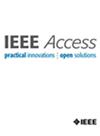Federated Learning for Fall Detection With Multimodal Residual Fusion and Pareto-Optimized Client Selection
IF 3.4
3区 计算机科学
Q2 COMPUTER SCIENCE, INFORMATION SYSTEMS
引用次数: 0
Abstract
With the increasing aging population and the prevalence of chronic diseases, fall detection has become a critical component in elderly healthcare monitoring. However, challenges such as multimodal data integration and joint analysis in Internet of Medical Things (IoMT) environments and data heterogeneity across sources hinder efficient and accurate fall detection. This paper proposes a Federated Learning-based framework with Multimodal Residual Fusion and Pareto-optimized Client Selection (FLPCS-MRF). Firstly, the framework incorporates a multimodal feature fusion network with a residual mechanism, which adaptively learns the optimal fusion scheme through residual connections, dynamically suppressing noise interference from redundant modalities. Secondly, to address variations in data modalities, distributions, and quality across clients, by considering all client factors rather than treating clients as independent, five innovative evaluation metrics are designed to assess the convergence and generalization performance of the local models. Finally, a Pareto-optimized client selection method is introduced to efficiently select reliable clients for global aggregation, ensuring both the stability and robustness of the global model. Extensive experiments on the UP Fall dataset demonstrate the effectiveness of the proposed approach, achieving 95.27% accuracy and 95.42% F1-score, outperforming existing methods. Additionally, it demonstrates strong robustness in complex scenarios involving imbalanced data distributions and missing modalities.求助全文
约1分钟内获得全文
求助全文
来源期刊

IEEE Access
COMPUTER SCIENCE, INFORMATION SYSTEMSENGIN-ENGINEERING, ELECTRICAL & ELECTRONIC
CiteScore
9.80
自引率
7.70%
发文量
6673
审稿时长
6 weeks
期刊介绍:
IEEE Access® is a multidisciplinary, open access (OA), applications-oriented, all-electronic archival journal that continuously presents the results of original research or development across all of IEEE''s fields of interest.
IEEE Access will publish articles that are of high interest to readers, original, technically correct, and clearly presented. Supported by author publication charges (APC), its hallmarks are a rapid peer review and publication process with open access to all readers. Unlike IEEE''s traditional Transactions or Journals, reviews are "binary", in that reviewers will either Accept or Reject an article in the form it is submitted in order to achieve rapid turnaround. Especially encouraged are submissions on:
Multidisciplinary topics, or applications-oriented articles and negative results that do not fit within the scope of IEEE''s traditional journals.
Practical articles discussing new experiments or measurement techniques, interesting solutions to engineering.
Development of new or improved fabrication or manufacturing techniques.
Reviews or survey articles of new or evolving fields oriented to assist others in understanding the new area.
 求助内容:
求助内容: 应助结果提醒方式:
应助结果提醒方式:


